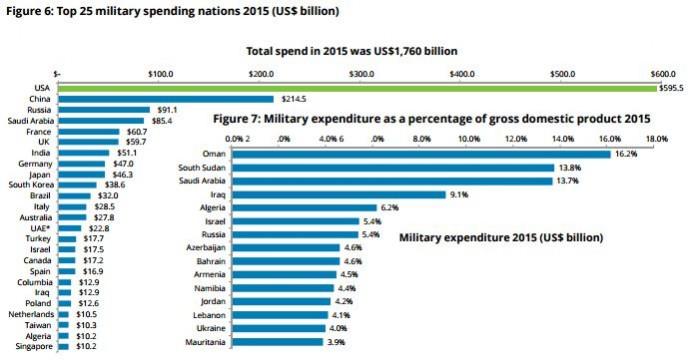Amid a resurgence of different security threats worldwide, expected increases in US defense budgets and a higher defense spending from India and Japan will likely boost global defense sector revenue growth in 2017.
Is India secretly preparing for a war?
The global Aerospace and Defense (A&D) sector is likely to grow around 2 percent in 2017, driven primarily by a 3.2 percent revenue growth in the defense sector, while commercial aerospace sector revenues are likely to remain flat at 0.3 percent increase, according to a Deloitte report.
Operating earnings for the commercial aerospace sector are expected to grow 20.6 percent, while defense segment's operating earnings will likely rise 7.0 percent.
The report noted that with rising global conflicts, demand for military products is increasing in the Middle East, Eastern Europe, North Korea, and the East and South China Seas.
"This is resulting in increased defense spending globally, especially, in the United Arab Emirates (UAE), Saudi Arabia, India, South Korea, Japan, and China – many of these countries have already started to increase purchases of next generation military equipment," highlights the report.
Additionally, Donald Trump speaking about increasing defense budgets to increase aircraft fleet would result in higher US defense spending.

Last year till October, India signed 15 contracts worth $10.5 billion with foreign vendors, including the deal for 36 Rafale fighter jets and 145 M777 lightweight Howitzers. By 2018, India's defense budget is projected to increase to $56.5 billion as the country recapitalizes and strengthens its military to counter potential threats from China and Pakistan.
Major A&D players such as Airbus, Boeing, Lockheed Martin, and Safran already have a footprint in the Indian market, with some of them planning further investments. For instance, Airbus announced a joint venture with Mahindra Defense Systems last year to manufacture helicopters for the Indian military. Similarly, Boeing entered into a joint-venture with Tata Advanced Systems in December 2015, wherein, they will manufacture fuselages of Apache Helicopters in India. As the sector opens up further, there will be an increase in global defense companies entering the Indian market.
For the commercial aerospace growth, stable global gross domestic product (GDP) growth, relatively lower commodity prices including crude oil, strong passenger travel demand, especially in the Middle East and Asia Pacific region, will likely drive the segment growth.
Commercial aircraft backlog is at an all-time high of approximately 13,500 aircraft units, representing more than nine-and-a-half years of current annual production rate.
Specifically, strong global airline passenger traffic and improved global airline profits, primarily on account of lower fuel costs will likely drive increased large commercial aircraft production and in turn commercial aerospace revenues in 2017 and 2018.

Deloitte expects about 96 more aircraft to be produced in 2017 as compared to 2016, which experienced a subdued performance impacted by a decline in commercial aircraft production.
India has the highest traffic RPK (revenue passenger kilometers) growth globally at 8.6 percent and it is expected to be the third largest aviation market by 2026. (China is expected to be the world's largest by 2035.) India will need 1,850 new commercial aircraft in the next two decades and that is likely to support the growth of low-cost carriers that represent more than 60 percent of the total flights.

















